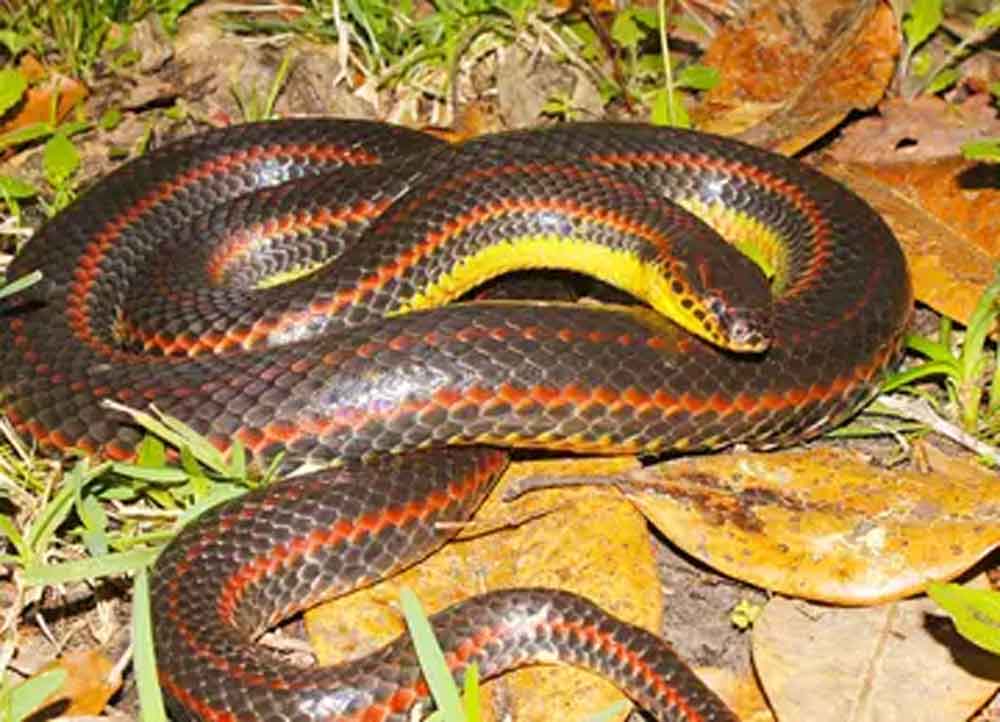The rainbow snake, also known as the eel moccasin, is a non-venomous colubrid snake that is primarily aquatic and feeds on eels, frogs, tadpoles and other amphibians.
If you’re in the state Florida, or are going to be herping in the state, the Florida Fish and Wildlife Conservation Commission wants the public to know that it is seeking sightings of the rainbow snake (Farancia erytrogramma), a species that not seen very often and whose populations have declined in the state.
“We need help from Floridians and visitors to better understand where rainbow snakes still occur in the state,” Kevin Enge, Research Scientist with FWC’s Fish and Wildlife Research Institute said in a press release put out by the FWC. “Every sighting report gives us valuable data about their current distribution and helps us assess the health of the species in Florida.”
The non-venomous rainbow snake is a semi-aquatic snake that feeds mostly on the American eel. The eels have also been in decline in the state, the FWC said. Habitat loss and the loss of prey have been detrimental to the rainbow snake, which have resulted in the decline in populations of the species. Snake fungal disease has also negatively impacted the species in other states, which may affect the long term survival of the rainbow snake.
The rainbow snake is known for its iridescent black and violet blue colorations with three red stripes along its back. The lip and chin scales are yellow and include violet spots. In 2020, the Florida Fish and Wildlife Research Institute reported the first documented sighting of a rainbow snake (Farancia erytrogramma) in the Ocala National Forest. It was apparently the first such sighting of the elusive species in the forest since 1969.
If you see a rainbow snake, please report the sighting to the FWC and if possible, photograph the snake to help confirm the species. You can submit your sighting online on the FWC website here.
Rainbow Snake Information
The rainbow snake, also known as the eel moccasin, is a non-venomous colubrid snake that is primarily aquatic and feeds on eels, frogs, tadpoles and other amphibians. In addition to being a strong swimmer, the reptile is a proficient burrower as well. It grows to about 36-48 inches (91–122 cm) in length, with larger specimens reaching up to 66 inches (168 cm). They are said to inhabit tidal mud flats, creeks, lakes and marshes.
A subspecies, the south Florida rainbow snake (Farancia erytrogramma seminola), was declared extinct in 2011. It inhabited the Fisheating Creek in Glades County, which is more than 150 miles 150 miles south of the nearest known population in Lake County, Florida. The last documented sighting of that subspecies occurred in 1952.



